
I entered the tourist site with a heavy dose of skepticism. After all, I love to show the inseparable connection between history and faith. We go to ancient sites in Israel to connect them with biblical events and to our lives today.
Tourist traps don’t align with those goals.
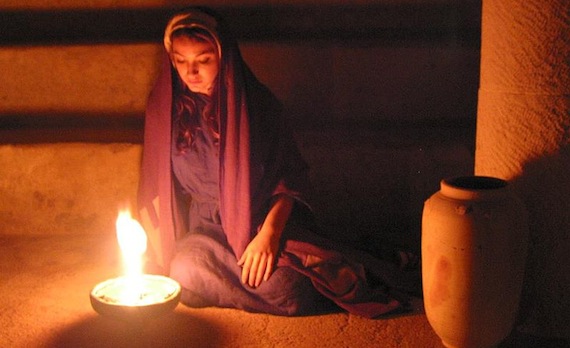
(Photo of Nazareth Village by מוחמד מוסא שהואן CC-BY-2.5, via Wikimedia Commons)
I’ll be honest, to spend time meandering through a place where people dress up in costumes like some Christmas play sounded to me to be . . . well, let’s just say I thought we could spend our valuable time somewhere else.
To my surprise, our time in the Nazareth Village proved to be one of our guests’ favorite stops in the Galilee. The village transported us back two thousand years and gave us a taste of the first century in a place where significant events actually occurred.
It gave a taste of life when Jesus lived here.
Nazareth Village—A Step Back in Time
As we entered through the rock doorway, I had to look hard to find anything that looked modern.
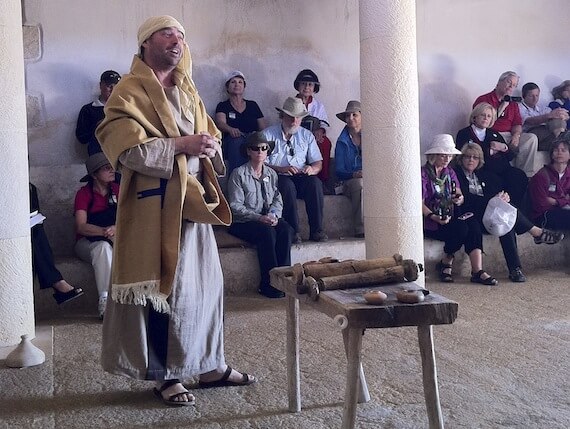
(Photo: The synagogue in Nazareth Village)
Sheep pens, burning oil lamps, cultivated fields, reapers with sickles, shepherds with flocks, hand-hewn caves with foodstuffs—all served to help us visualize life as it was during the time when Jesus grew up in this very village.
An audiovisual display provides a fine introduction to the Nazareth Village.
The guided tour provides insights about century-one Nazareth that otherwise you’d never know.
[slideshow id=49]
(Photos of Nazareth Village by Cathy Stiles)
Based on considerable research, the Nazareth Village is designed to portray first-century agriculture, clothing, foods, and building techniques.
- A life-sized synagogue revealed how the building remained cool in the heat of summer.
- A huge millstone showed how a donkey would have circled to crush olives.
- A wall-sized loom allowed a woman in period dress to describe how multicolored fabrics were woven.
- Terraced walkways and smooth paths made it easy for all ages to explore.
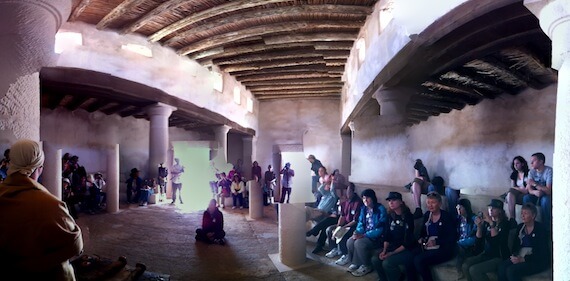
(Photo: Synagogue in the Nazareth Village)
Imagining Jesus’ Carpenter Shop
Because I love woodworking, my favorite moment was the carpenter shop.
I could not imagine making furniture without my table saw, router, and orbital sander. And yet, Jesus and the carpenters of Galilee used a variety of ingenious hand tools to produce everything from practical implements to heirloom pieces.
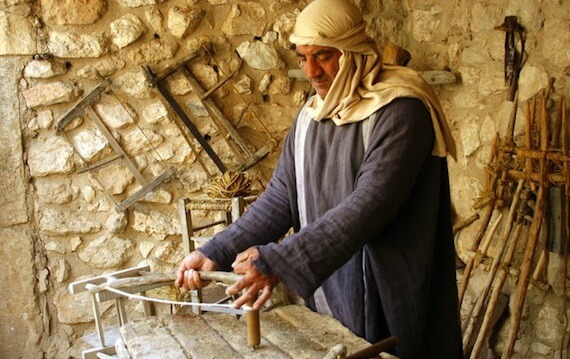
(Photo: Carpenter in the Nazareth Village, by מוחמד מוסא שהואן CC-BY-2.5, via Wikimedia Commons)
The carpenter toiled over a crude workbench and gave new meaning to the term wood-working.
Here’s a great scene from The Passion of the Christ, which portrays Jesus working in His Nazareth carpenter shop.
Something Old, Something New at Nazareth Village
Archaeology at the site of the village has unearthed pottery shards that date from the early Roman period. The excavators even discovered a wine press carved from the bedrock.
Blending history, archaeology, and loads of creative imagination, the Nazareth Village effectively transports both children and adults to the first century through a creative blend of environment, education, and inspiration. The gift shop even gave us each a replica oil lamp as a souvenir.
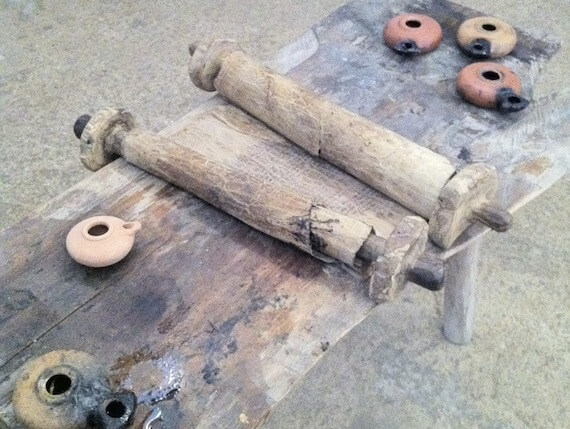
(Photo: Scrolls in the synagogue at Nazareth Village)
Although I never would have expected it, the Nazareth Village did what no other tourist stop had—it portrayed what life was like in a sleepy farm village in century-one Galilee.
We’ll go there again.
Tell me what you think: What benefits do you see in portraying life as it really was? To leave a comment, just click here.
Click here to leave a comment.
-1.png?width=5230&height=1198&name=unnamed%20(4)-1.png)

.jpg?width=350&name=Wayne-books-350wide%20(1).jpg)




